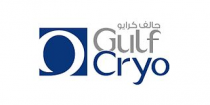Global UPS Market Expected to Grow with a CAGR of Around 5% During the Forecast Period, 2020-2024 - ResearchAndMarkets.com
The "UPS Market by Application and Geography - Forecast and Analysis 2020-2024" report has been added to ResearchAndMarkets.com's offering.
Global UPS Market: About this market
The UPS market analysis considers sales from both non-residential and residential applications. Our study also finds the sales of UPS in APAC, Europe, MEA, North America, and South America. In 2019, the non-residential segment had a significant market share, and this trend is expected to continue over the forecast period. Factors such as the rapid increase in demand from data centers will play a significant role in the non-residential segment to maintain its market position. Also, our global UPS market report looks at factors such as growth in data center infrastructure, an increase in demand for UPS from emerging economies, demand from the telecom industry. However, risks for UPS failure, rise in distributed power generation, and drawbacks of batteries may hamper the growth of the UPS industry over the forecast period.
Global UPS Market: Overview
Growth in data center infrastructure
UPS is used in data centers to ensure that all the sensitive computing equipment of data centers, such as servers and routers, receives a continuous supply of power and is unaffected by power quality and power line disturbances. The rise in the adoption of multi-cloud and network upgrades have led to an increase in the adoption of UPS. With the growing customer base and the continuous addition of new service model offerings, data center operators are significantly increasing their data center infrastructure investments to cater to the demand. This growth in data center infrastructure will lead to the expansion of the global UPS market at a CAGR of almost 5% during the forecast period.
Growing use of lithium-ion batteries in the UPS systems
Lithium-ion batteries offer several advantages over lead-acid batteries, such as higher energy density, higher depth of discharge, higher charge rate, longer power-holding capacity, and longer shelf life. Other than superior performance, the cost is a critical differentiating factor between lithium-ion batteries and other battery technologies. Leading manufacturers of lithium-ion batteries are working on technological advances and are trying to reduce their prices. A decline in the price of lithium-ion batteries is being supported by increasing mass production and various government incentives. The production cost of lithium-ion batteries and the cost of battery packs have declined substantially over the past few years, owing to the improved production scale and manufacturing efficiency. This development is expected to have a positive impact on the overall market growth.
Key Topics Covered:
PART 01: EXECUTIVE SUMMARY
PART 02: SCOPE OF THE REPORT
- Preface
- Currency conversion rates for US$
PART 03: MARKET LANDSCAPE
- Market ecosystem
- Market characteristics
- Value chain analysis
- Market segmentation analysis
PART 04: MARKET SIZING
- Market definition
- Market sizing 2019
- Market outlook
- Market size and forecast 2019-2024
PART 05: FIVE FORCES ANALYSIS
- Bargaining power of buyers
- Bargaining power of suppliers
- Threat of new entrants
- Threat of substitutes
- Threat of rivalry
- Market condition
PART 06: MARKET SEGMENTATION BY APPLICATION
- Market segmentation by application
- Comparison by application
- Non-residential - Market size and forecast 2019-2024
- Residential - Market size and forecast 2019-2024
- Market opportunity by application
PART 07: CUSTOMER LANDSCAPE
PART 08: GEOGRAPHIC LANDSCAPE
- Geographic segmentation
- Geographic comparison
- APAC - Market size and forecast 2019-2024
- Europe - Market size and forecast 2019-2024
- North America - Market size and forecast 2019-2024
- MEA - Market size and forecast 2019-2024
- South America - Market size and forecast 2019-2024
- Key leading countries
- Market opportunity
PART 09: DECISION FRAMEWORK
PART 10: DRIVERS AND CHALLENGES
- Market drivers
- Market challenges
PART 11: MARKET TRENDS
- Advances in UPS technology
- Growing use of lithium-ion batteries in UPS systems
- Increase in integration of power sources
PART 12: VENDOR LANDSCAPE
- Overview
- Landscape disruption
- Competitive scenario
PART 13: VENDOR ANALYSIS
- Vendors covered
- Vendor classification
- Market positioning of vendors
- ABB Ltd.
- Ablerex Electronics Co. Ltd.
- Eaton Corp. Plc
- EnerSys
- Huawei Investment & Holding Co. Ltd.
- Legrand SA
- Mitsubishi Electric Corp.
- Schneider Electric SE
- Toshiba Corp.
- Vertiv Group Corp.
For more information about this report visit https://www.researchandmarkets.com/r/9jbin7
View source version on businesswire.com: https://www.businesswire.com/news/home/20200114005575/en/




